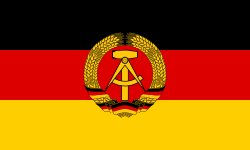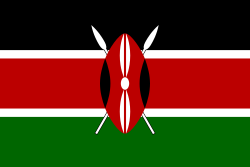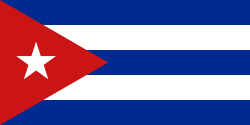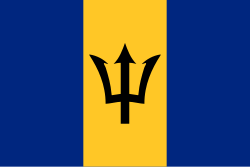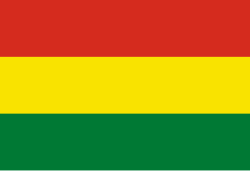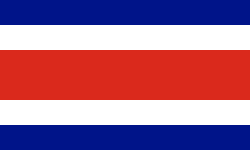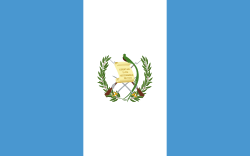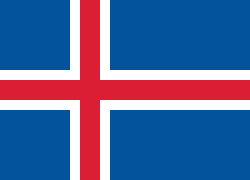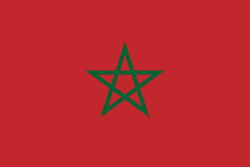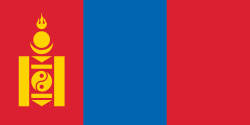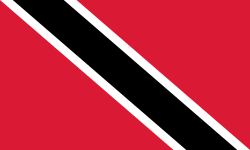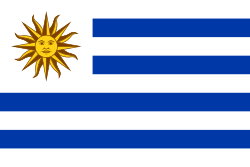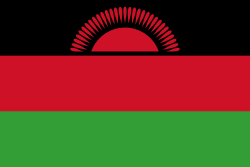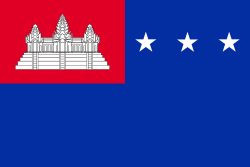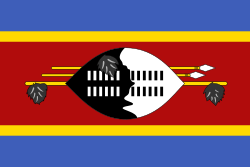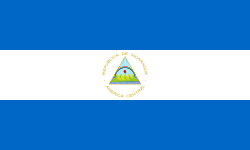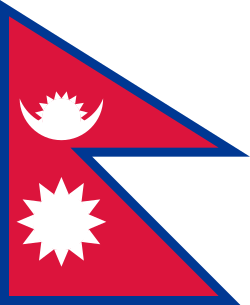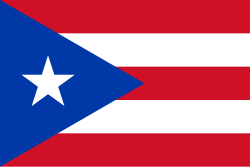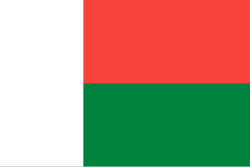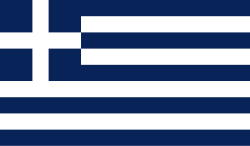Friidrott vid olympiska sommarspelen 1972
| Friidrott vid olympiska sommarspelen 1972 | |
 | |
| Anläggning | Münchens Olympiastadion, München, Bayern, |
|---|---|
| Datum | 31 augusti-10 september 1972 |


Friidrottstävlingarna vid de Olympiska sommarspelen 1972 bestod av 38 grenar, 24 för män och 14 för kvinnor, och hölls mellan 31 augusti och 10 september 1972 på Münchens Olympiastadion. Antalet deltagare var 1 330 tävlande från 104 länder.
- Lasse Virén, Finland vann såväl 5000 m som 10000 m (det senare loppet trots ett fall). Han skulle upprepa sin bragd fyra år senare.
- Sprintern Valerij Borzov, Sovjetunionen tog hem dubbeln på 100 m och 200 m.
Medaljfördelning
| Friidrott vid olympiska sommarspelen 1972 | ||||
| ||||
|---|---|---|---|---|
| ||||
| ||||
| ||||
| ||||
| ||||
| ||||
| ||||
| Medaljfördelning | |||||
|---|---|---|---|---|---|
| Placering | Nation | Totalt | |||
| 1 | 9 | 7 | 1 | 17 | |
| 2 | 8 | 7 | 5 | 20 | |
| 3 | 6 | 8 | 8 | 22 | |
| 4 | 6 | 3 | 2 | 11 | |
| 5 | 3 | 0 | 1 | 4 | |
| 6 | 2 | 2 | 2 | 6 | |
| 7 | 1 | 1 | 2 | 4 | |
| 8 | 1 | 0 | 2 | 3 | |
| 9 | 1 | 0 | 1 | 2 | |
| 10 | 1 | 0 | 0 | 1 | |
| 11 | 0 | 2 | 2 | 4 | |
| 12 | 0 | 2 | 0 | 2 | |
| 0 | 2 | 0 | 2 | ||
| 0 | 2 | 0 | 2 | ||
| 15 | 0 | 1 | 1 | 2 | |
| 16 | 0 | 1 | 0 | 1 | |
| 17 | 0 | 0 | 2 | 2 | |
| 0 | 0 | 2 | 2 | ||
| 0 | 0 | 2 | 2 | ||
| 20 | 0 | 0 | 1 | 1 | |
| 0 | 0 | 1 | 1 | ||
| 0 | 0 | 1 | 1 | ||
| 0 | 0 | 1 | 1 | ||
| 0 | 0 | 1 | 1 | ||
Medaljörer
Herrar
Damer
Deltagande nationer
Totalt deltog 1 330 friidrottare från 104 länder vid de olympiska spelen 1972 i München.
Källor
- ”Athletics at the 1972 München Summer Games”. Sports Reference. Arkiverad från originalet den 3 december 2008. https://web.archive.org/web/20081203052057/http://www.sports-reference.com/olympics/summer/1972/ATH/. Läst 4 oktober 2011.
- Den här artikeln är helt eller delvis baserad på material från engelskspråkiga Wikipedia, tidigare version.
Externa länkar
 Wikimedia Commons har media som rör Friidrott vid olympiska sommarspelen 1972.
Wikimedia Commons har media som rör Friidrott vid olympiska sommarspelen 1972.
| ||||||||||||||
| |||||||||||
Media som används på denna webbplats
Pictograms of Olympic sports – . This is an unofficial sample picture. Images of official Olympic pictograms for 1948 Summer Olympics and all Summer Olympics since 1964 can be found in corresponding Official Reports.
Författare/Upphovsman: B1mbo, Licens: CC BY-SA 2.5
Drawing of a gold medal, based on Olympic rings.svg.
Författare/Upphovsman: B1mbo, Licens: CC BY-SA 2.5
Draw of a silver medal, based in Olympic rings.svg.
- The joining of the rings is not correct drawn.
Författare/Upphovsman: B1mbo, Licens: CC BY-SA 2.5
Drawing of a bronze medal, based on Olympic rings.svg.
The civil ensign and flag of Belgium. It is identical to Image:Flag of Belgium.svg except that it has a 2:3 ratio, instead of 13:15.
Flag of Romania, (21 August 1965 - 22 December 1989/officialy 27 December 1989).

Construction sheet of the Flag of Romania as depicted in Decree nr. 972 from 5 November 1968.
- l = 2/3 × L
- C = 1/3 × L
- S = 2/5 × l
Flag of Romania, (21 August 1965 - 22 December 1989/officialy 27 December 1989).

Construction sheet of the Flag of Romania as depicted in Decree nr. 972 from 5 November 1968.
- l = 2/3 × L
- C = 1/3 × L
- S = 2/5 × l
Flag of Tunisia until 1999.
The flag of Brazil from 1968 to 1992 with 23 stars.
Flag of Jamaica. “The sunshine, the land is green, and the people are strong and bold” is the symbolism of the colours of the flag. GOLD represents the natural wealth and beauty of sunlight; GREEN represents hope and agricultural resources; BLACK represents the strength and creativity of the people. The original symbolism, however, was "Hardships there are, but the land is green, and the sun shineth", where BLACK represented the hardships being faced.
| Bolivias flagga* | |
|---|---|
| country | Template:I18n/Republic of Bolivia |
| används av | Bolivia |
| från | 1851 |
| till | Present |
| skapad av | Government of Bolivia |
| format | 15:22 |
| form | rektangulär |
| färger | röd, gul, grön
flag has 3 horizontal stripes |
| andra egenskaper | A horizontal tricolor of red, yellow and green. |
Det är enkelt att lägga till en ram runt den här bilden
Flag of the Ivory Coast, written by Jon Harald Søby, modified by Zscout370. The colors match to what is reported at http://fotw.vexillum.com/flags/ci.html.
bendera Indonesia
Flag of Israel. Shows a Magen David (“Shield of David”) between two stripes. The Shield of David is a traditional Jewish symbol. The stripes symbolize a Jewish prayer shawl (tallit).
Flag of the Socialist Federal Republic of Yugoslavia (1946-1992).
The design (blazon) is defined in Article 4 of the Constitution for the Republic of Yugoslavia (1946). [1]
Flag of the Socialist Federal Republic of Yugoslavia (1946-1992).
The design (blazon) is defined in Article 4 of the Constitution for the Republic of Yugoslavia (1946). [1]
Författare/Upphovsman: Gutten på Hemsen, Licens: CC0
Flag of Norway with colors from the previous version on Commons. This file is used to discuss the colors of the Norwegian flag.
State Flag of Peru.
Flag of Portugal, created by Columbano Bordalo Pinheiro (1857–1929), officially adopted by Portuguese government in June 30th 1911 (in use since about November 1910). Color shades matching the RGB values officially reccomended here. (PMS values should be used for direct ink or textile; CMYK for 4-color offset printing on paper; this is an image for screen display, RGB should be used.)
Författare/Upphovsman: SanchoPanzaXXI, Licens: CC BY-SA 4.0
Flag of Spain during the Spanish State. It was adopted on 11 October 1945 with Reglamento de Banderas Insignias y Distintivos (Flags, Ensigns and Coats of Arms Bill)
The national flag of Kingdom of Thailand; there are total of 3 colours:
- Red represents the blood spilt to protect Thailand’s independence and often more simply described as representing the nation.
- White represents the religion of Buddhism, the predominant religion of the nation
- Blue represents the monarchy of the nation, which is recognised as the centre of Thai hearts.
Trinidad och Tobagos flagga
Government Ensign of Hungary, flown by state-owned, non-military vessels from 1957 to 1990.
Flag of the Republic of Venezuela (1930-2006)
Flag of the Republic of Venezuela (1930-2006)
The flag of the Ethiopian Empire with the Lion of Judah in the center
(c) Zscout370 på engelska Wikipedia, CC BY-SA 3.0
The first flag of the nation of Lesotho, used from 1966 until 1987. Elements from this flag can be seen on the current national flag, in use starting in 2006.
Olympic Rings without "rims" (gaps between the rings), As used, eg. in the logos of the 2008 and 2016 Olympics. The colour scheme applied here was specified in 2023 guidelines.
Flag of Zambia before 1996
Flag of the People's Republic of Congo between 1 January 1970 - 10 June 1991
Flag of Senegal
Flag of Syria (1972-1980), while the country was in the Federation of Arab Republics. The Arab text in the scroll held by the “Golden Hawk of Qureish” reads Arabic اتحاد الجمهوريات العربية, ittiħād al-jumhūriyyāt al-`arabiyya, i.e. the Federation (literally “Union”) of Arab Republics — in a quasi-Kufic script (in its original form, with a very ornamental letter dal د). Unlike Libya and Egypt, Syria did not display its name on the flag during this period.
Flag of Suriname, constituent country of the Kingdom of the Netherlands (1954-1974), from its adoption in 1959 until the achievement of independence on 25 November 1975, on which date the flag was changed to its current form.
Författare/Upphovsman: Dave Morris from Edinburgh, UK, Licens: CC BY 2.0
Olympiastadion i München. Olympiastadion. Olympiapark i München.
Flag of the Philippines (1919–1936)
The Egyptian flag (1972-1984). Also the flag of Libya (1972-1977) and Syria (1972-1980), when the three countries formed the nominal “Federation of Arab Republics”. (For a map of the federation, see Image:Esl.PNG.)
The Arab text in the scroll held by the “Golden Hawk of Qureish” reads Arabic اتحاد الجمهوريات العربية, ittiħād al-jumhūriyyāt al-`arabiyya, i.e. the Federation (literally “Union”) of Arab Republics — in a quasi-Kufic script (in its original form, with a very ornamental letter dal د).
Författare/Upphovsman: Tcfc2349, Licens: CC BY-SA 4.0
Flag of the Bahamas (1964-1973)
Flag of Cameroon, 1961-75
Författare/Upphovsman: Scroch, Licens: CC BY-SA 3.0
Flag of Bulgaria (1971-1990). Flag of Bulgaria with Bulgarian coat from 1971.
Flag of Greece (1970–1975), adopted by the Greek military Junta; Aspect ratio: 7:12






